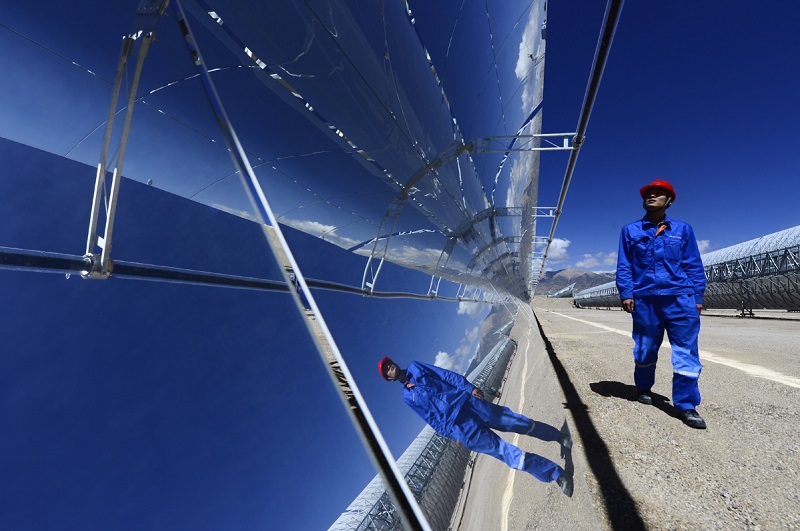Clean energy accounts for over 90% of Qinghai's installed capacity, according to provincial people's congress

An employee of CGN New Energy Holdings inspects solar panels at a power plant in Golmud, Qinghai province. [Photo/Xinhua]
XINING - The installed clean energy capacity of Northwest China's Qinghai province surpassed 51 million kilowatts in 2023, accounting for 93 percent of the province's total installed power capacity.
In 2023, Qinghai's installed clean energy capacity increased by 9.8 million kilowatts, according to statistics released at the annual session of the Qinghai Provincial People's Congress.
Its total installed power capacity stood at 54.97 million kilowatts at the end of 2023, data from Qinghai's energy administration shows.
Last year, the plateau province also saw its new energy power generation surpass its hydropower generation for the first time, becoming its largest power source.
This year, Qinghai plans to connect three groups of large-scale new energy bases to the grid and promote the construction of hydropower stations and wind power projects further. It also aims to add more than 15 million kilowatts to its installed clean energy capacity.
Located on the Qinghai-Xizang Plateau, Qinghai is home to the headwaters of the Yangtze, Yellow and Lancang rivers, and is an important clean energy production base in China that is known for its rich water, solar and wind power resources.
- Top legislature schedules session for December
- China's top legislator holds talks with president of Luxembourg parliament
- China's top legislator meets with French president
- China, Maldives pledge to enhance exchanges between legislative bodies
- Senior Chinese legislator meets Portugal's PSD delegation



